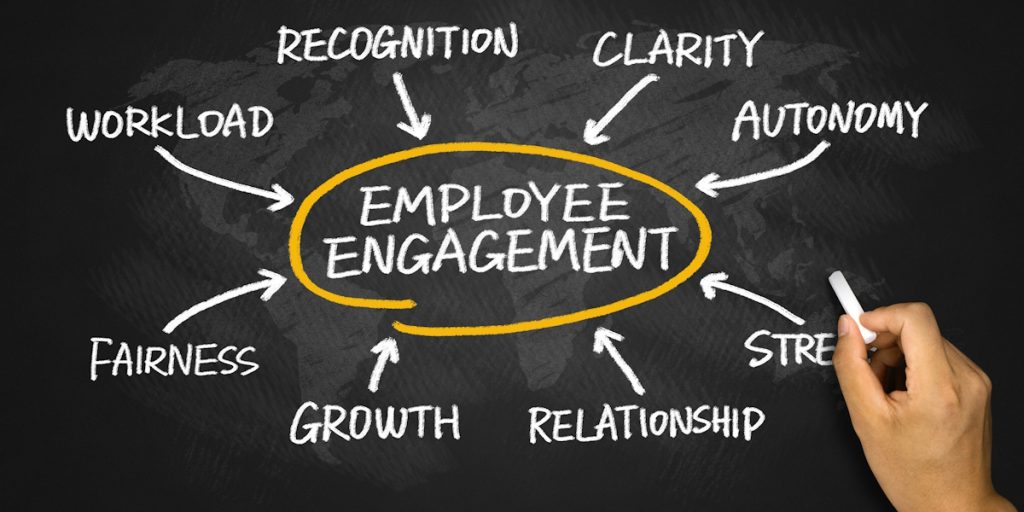Employee retention is not a buzzword in human resources but rather an essential business growth tool. When employees stay in their respective jobs, businesses thrive. However, most companies fail to pay much heed to its relevance and instead give more importance to recruitment. The time has come to change that as science-and experience-argue that keeping your employees satisfied and engaged leads to sustainable growth. In this blog post, we discuss why employee retention matters, how it fuels growth, and what practical steps your company can take in order to keep the talent onboard.
Why Employee Retention is More Than Just a Nice-to-Have?
It’s easy to assume that employees will always look for greener pastures. While, a little turnover should be expected. However, high turnover can hurt your business because the cost of losing employees doesn’t just stop there with filling their positions. The loss of key employees disrupts the flow of work, causes morale to drop, and leaves a void in knowledge within your teams. Holding on to good employees will avoid such issues and make things run smoothly, thus contributing to company growth.
Science affirms this. Over and over again, the studies have shown that firms with retained employees tend to perform better than those without such retention. Over a retained workforce would imply an increase in productivity and seen often that the customers are satisfied. Organizational culture develops with a more stable workforce, and these aspects work towards monetary gains. When your employee value grows, so does the contribution of your employee for the long-term success of the company.
How Employee Retention Directly Impacts Company Growth?
There’s a clear connection between employee retention and company growth. Here’s how:
Cost Savings:
Hiring new employees isn’t cheap. From advertising job postings to conducting interviews and training, it can cost businesses thousands of dollars per new hire. Retaining employees helps you avoid these costs. The longer employees stay, the less money you spend on constantly replacing them.
Higher Productivity:
Employees who stick around know the ins and outs of their job. They understand the company’s mission and are more efficient in their work. Long-term employees often require less supervision and can train new team members. This leads to higher overall productivity, which contributes to business growth.
Stronger Company Culture:
Retention allows you to build a consistent company culture. Employees who stay long-term align more deeply with your company’s values. A positive company culture, in turn, attracts new talent and encourages current employees to continue their journey with you.
Customer Satisfaction:
Employees who stay longer are better at building relationships with customers. They understand customer needs better and can offer superior service. High employee retention means less disruption in customer service, which boosts customer loyalty and leads to business growth.
Innovation and Creativity:
When employees stay, they’re more invested in the company’s success. This fosters a culture of innovation, where employees feel empowered to share their ideas. Long-term employees often come up with creative solutions that drive the company forward.
The Cost of High Employee Turnover
On the flip side, high turnover is costly. It impacts your bottom line and damages your reputation. Let’s break down the real cost of losing employees:
- Hiring Expenses: As mentioned earlier, hiring new employees is expensive. You need to spend on recruitment, training, and onboarding. Every time an employee leaves, you have to start this process over again.
- Lost Productivity: When employees leave, it takes time to replace them. During this period, productivity drops. Existing employees may also have to pick up the slack, leading to burnout and dissatisfaction.
- Knowledge Drain: Long-term employees carry valuable knowledge about your company. When they leave, they take this knowledge with them. It can take months or even years for a new hire to reach the same level of expertise.
- Lower Morale: High turnover creates a stressful work environment. Remaining employees may worry about their job security or feel overworked. This leads to lower morale and, eventually, more turnover.
Clearly, high turnover harms businesses in multiple ways. The good news? Focusing on employee retention can turn things around.
Top Employee Retention Strategies
So, how do you keep your employees feeling happy and reduce turnover? The key is through a combination of good communication, recognition, and opportunities for growth. Here are some of the strategies that you can implement today:
Offer Competitive Salaries and Benefits
Employees should be evaluated for their work. It starts with competitive wages and benefits. No matter how much you pay them, you probably are not going to retain employees that way. Fair compensation, however, tells your employee that you appreciate them. Roll health insurance, retirement plans, and wellness programs into your benefit package as you make your company a better place to be.
Provide Opportunities for Growth
Opportunities for growth and development are also a positive. You can have professional training, mentorship programs, and social events. Ideally, when he or she sees the potential for growth, they might consider sticking around.
No one wants to be stuck in a job with no future. People who see a future at your company will tend to stick around. Offer professional development through training, workshops, and courses. Internal promotion also tends to stay longer because it gives an employee a clear picture of their career path at the company.
Encourage a Positive Work Environment
Retention has its roots in positive work culture. Ensure that employees are motivated and valued. Offer or implement flexible schedules or even remote working arrangements to facilitate work-life balance. Happy workers do not leave.
Acknowledge and Reward Their Successes
Recognition is the best motivator. Regular acknowledgment of the employees’ efforts and excellent job performance will definitely make them feel that they are valued. Put in place a reward system for good work. This can be in the form of bonuses, employee of the month, or recognition in the team meetings. Hence, integrating Incentives and Recognition also helps in increasing the company goals.
Encouraging Open Communication
Employees who are listened to will most likely stick with your organization. Create a place where employees feel at ease voicing opinions and concerns. Organize regular one-on-one sessions so you can catch up with your team, get to know their needs, and determine what makes them successful. Following up on employee feedback demonstrates your interest and concern for their well-being.
Build a Good Onboarding Process
Employee retention begins on the first day: An effective onboarding process makes new employees feel welcomed and trained for success. Take time to properly train new hires and introduce your company culture. When the employee is confident in their role, they will be more likely to stay.
How to Measure Employee Retention?
Once you’ve implemented retention strategies, how do you know if they’re working? Measuring employee retention is key to understanding the effectiveness of your efforts. Here are some metrics to track:
- Turnover Rate: This is the most basic metric for measuring retention. Calculate your turnover rate by dividing the number of employees who left by the total number of employees in a specific period. A high turnover rate signals the need for improved retention efforts.
- Employee Satisfaction Surveys: Regularly conduct surveys to measure employee satisfaction. These can give you valuable insights into how your employees feel about their jobs and where improvements are needed.
- Retention Rate by Department: Sometimes, retention issues are isolated to specific teams or departments. Analyzing retention rates by department can help you identify problem areas and target your retention efforts accordingly.
- Exit Interviews: When an employee leaves, conduct an exit interview to understand why. This feedback can help you improve retention strategies and address any underlying issues that may be causing employees to leave.
Conclusion
Employee retention is more than just keeping people on the payroll. It’s bringing in a much-needed injection of growth and nurturing your business. What you put into your employees eventually means putting them in the long run to be successful in a company. Moving forward, retention saves costs, increases productivity, and develops a stronger culture for your company-all contributing to a sustainable growth. So begin focusing on retention today, because when your employees stay, your business wins.
Frequently Asked Questions (FAQs)
1. What is employee retention?
Employee retention refers to a company’s ability to keep its employees over time. It focuses on reducing turnover and keeping valuable talent within the organization.
2. Why is employee retention important for company growth?
Retaining employees helps improve productivity, build strong company culture, and reduce hiring costs. All these factors contribute to business growth and stability.
3. How can a company improve employee retention?
Companies can improve retention by offering competitive salaries, providing growth opportunities, fostering a positive work environment, and recognizing employee achievements.
4. What is the impact of high employee turnover?
High employee turnover leads to increased hiring costs, lost productivity, and a weakened company culture. It can also hurt your company’s reputation.
5. How does employee retention affect customer satisfaction?
Employees who stay longer build stronger relationships with customers, leading to better service and higher customer satisfaction. Stable employees are more invested in delivering quality service.
6. What role does company culture play in employee retention?
Company culture plays a huge role in retention. A positive and supportive work environment encourages employees to stay, while a toxic culture pushes them away.
Want to drive company’s growth with Employee Retention?




